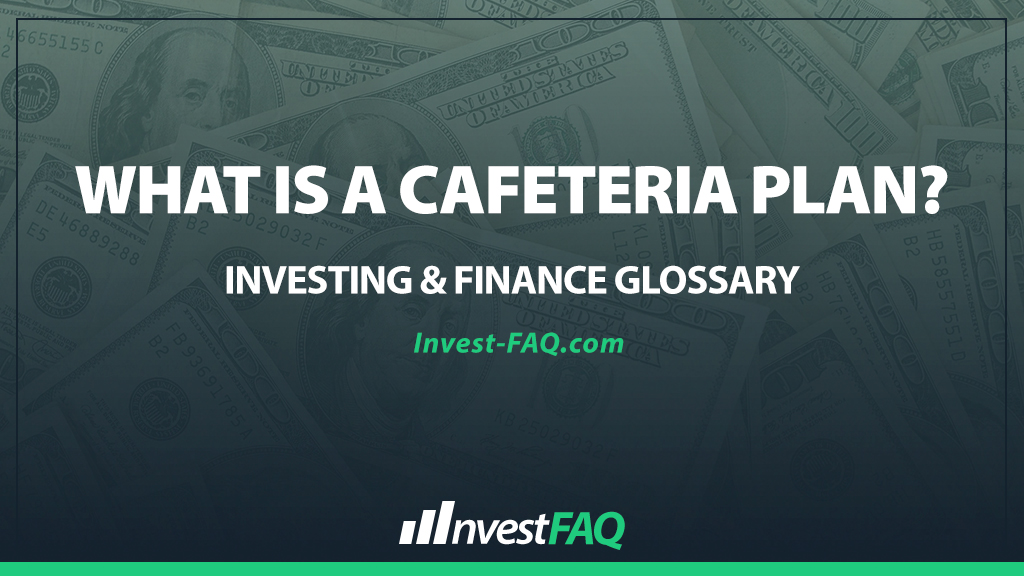
Cafeteria Plan
Contents
A cafeteria plan, also known as a Section 125 plan, is a type of employee benefit plan offered by employers that allows employees to choose from a variety of pre-tax benefit options to create a benefits package that best meets their individual needs. \These plans can include health insurance, retirement savings options, and flexible spending accounts, among others, with the key feature being their tax-advantaged status.
Cafeteria plans are used by businesses to offer flexible benefits while also providing tax advantages for both the employer and employees.
By allowing employees to select from a range of benefit options and allocate their benefit dollars according to their personal situations, companies can enhance employee satisfaction and retention.
For employers, the contributions made to cafeteria plans are tax-deductible, and the plans can lead to reduced payroll taxes.
Example of a Cafeteria Plan
Imagine “XYZ Corp.” offers its employees a cafeteria plan that includes options for health insurance, dental insurance, a 401(k) plan, and a flexible spending account (FSA). An employee, John, decides to allocate $200 per month to the health insurance premium, $50 to dental insurance, and contributes $150 to his 401(k). He also elects to contribute $100 per month to an FSA for healthcare expenses.
From an accounting perspective:
Employee’s Gross Income: Let’s say John’s gross monthly income is $4,000.
Pre-tax Contributions: John’s total pre-tax contributions to the cafeteria plan amount to $500 per month.
Taxable Income: John’s taxable income is now reduced to $3,500 ($4,000 – $500), lowering his income tax liability.
Employer’s Payroll Taxes: “XYZ Corp.” also benefits, as it pays reduced payroll taxes on John’s lower taxable income.
In this scenario, John effectively reduces his taxable income by $500 per month through his cafeteria plan elections, which lowers his personal income taxes.
Simultaneously, “XYZ Corp.” benefits from reduced payroll tax obligations because payroll taxes are calculated based on taxable income, which has been lowered by the pre-tax deductions.
This arrangement exemplifies the mutual tax benefits of cafeteria plans for employees and employers.
Significance for Investing & Finance
The significance of cafeteria plans in accounting and financial management includes:
Tax Efficiency: Cafeteria plans provide a tax-efficient way to offer employee benefits, reducing taxable income for employees and payroll tax liabilities for employers.
Employee Satisfaction and Retention: By offering customizable benefit options, companies can improve employee satisfaction, making these plans a strategic tool for employee retention.
Budgeting and Financial Planning: Employers can more accurately budget for employee benefits costs, as cafeteria plans often result in more predictable benefit expenses.
Regulatory Compliance: Proper administration and accounting for cafeteria plans ensure compliance with IRS regulations, avoiding potential tax penalties.
In summary, cafeteria plans represent a strategic approach to offering employee benefits, providing flexibility and tax advantages that can significantly impact both employee satisfaction and a company’s bottom line. Effective management and accounting for these plans are crucial for maximizing their benefits and ensuring regulatory compliance.
FAQ
How do cafeteria plans benefit employees in terms of tax savings?
Cafeteria plans allow employees to pay for certain eligible expenses with pre-tax dollars, reducing their taxable income and thereby decreasing the amount of income tax they owe, leading to potential significant tax savings over time.
Can an employee change their cafeteria plan selections at any time during the year?
Employees are generally allowed to change their cafeteria plan selections during the annual open enrollment period or if they experience a qualifying life event, such as marriage, birth of a child, or loss of other health coverage, ensuring flexibility to adjust benefits as their needs change.
What types of benefits are typically offered under a cafeteria plan?
Cafeteria plans typically offer a range of benefits including health insurance, dental and vision care, flexible spending accounts (FSAs) for healthcare and dependent care, life insurance, and sometimes retirement savings options, providing a comprehensive benefits package to meet diverse employee needs.
Are there any risks or downsides for employers offering cafeteria plans to their employees?
The main risks for employers include the administrative complexity and costs associated with managing the plan and ensuring compliance with IRS rules and regulations, but these are often offset by the tax advantages and the positive impact on employee satisfaction and retention.
